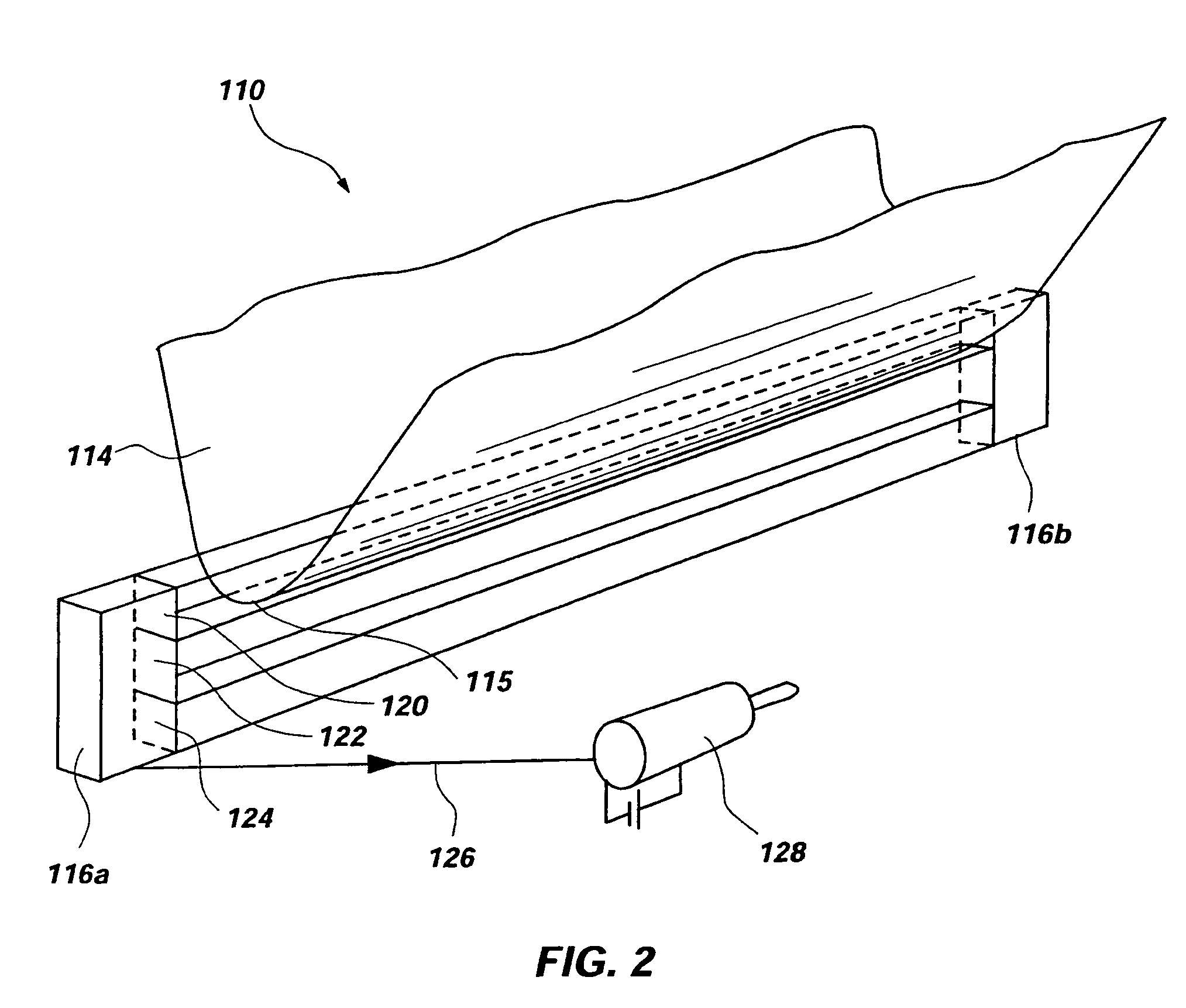Unbacked fabric transport and condition system
a technology of transport and condition system and unbacked fabric, which is applied in the direction of transportation and packaging, textile treatment carrier, dyeing process, etc., can solve the problems of significant environmental unfriendly waste stream, time-consuming and environmental protection, and industrial fabric printing process prohibitive for small-scale users to use, so as to avoid damage to the print head
- Summary
- Abstract
- Description
- Claims
- Application Information
AI Technical Summary
Benefits of technology
Problems solved by technology
Method used
Image
Examples
first embodiment
[0059]Referring now to FIG. 5, there is shown an expanded perspective view of the fabric characterization and tension control subsystem 130 located just ahead of components used in the irregularity detection and removal subsystem 150. As illustrated, the irregularity detection and removal system 150 includes a steam table 152 and an ironing roller 154. Once the fabric 114 is characterized by the fabric characterization and tension control subsystem 130, the fabric 114 is moved in a direction illustrated by arrow 14. The fabric 114 crosses the steam table 152 and is ironed with the ironing roller 154 to remove wrinkles and creases. It will be apparent that steam tables 152 and ironing rollers 154 are well known in the art. Accordingly, any steam table 152 and ironing roller 154 that performs functions the same as, or equivalent to, the steam table 152 and ironing roller 154 described herein are meant to be encompassed by the present invention.
second embodiment
[0060]Referring to FIG. 6, there is shown an expanded perspective view of the fabric characterization and tension control subsystem 130 in relation to the irregularity detection and crease removal subsystem 150. As illustrated, the fabric characterization and tension control subsystem 130 includes skewed rollers 132 and drive motors 136 to drive the skewed rollers 132. Also included are a bowed roller 138 and a bowed roller drive motor 139. The bowed roller 138 is used to remove soft creases and provide a light cross-web tension to the fabric 114. Once the soft creases are removed, the fabric 114 may be stretched in multiple directions by the skewed rollers 132 and bowed roller 138 before the fabric 114 is transported to the steam table 152.
[0061]Additionally, the skewed rollers 132 may provide web guidance of the fabric 114 when used in conjunction with the CCD array 134, as illustrated in FIG. 5. It will be appreciated that depending on the type of fabric 114 in the UFTCS 10, the ...
PUM
 Login to View More
Login to View More Abstract
Description
Claims
Application Information
 Login to View More
Login to View More - R&D
- Intellectual Property
- Life Sciences
- Materials
- Tech Scout
- Unparalleled Data Quality
- Higher Quality Content
- 60% Fewer Hallucinations
Browse by: Latest US Patents, China's latest patents, Technical Efficacy Thesaurus, Application Domain, Technology Topic, Popular Technical Reports.
© 2025 PatSnap. All rights reserved.Legal|Privacy policy|Modern Slavery Act Transparency Statement|Sitemap|About US| Contact US: help@patsnap.com



